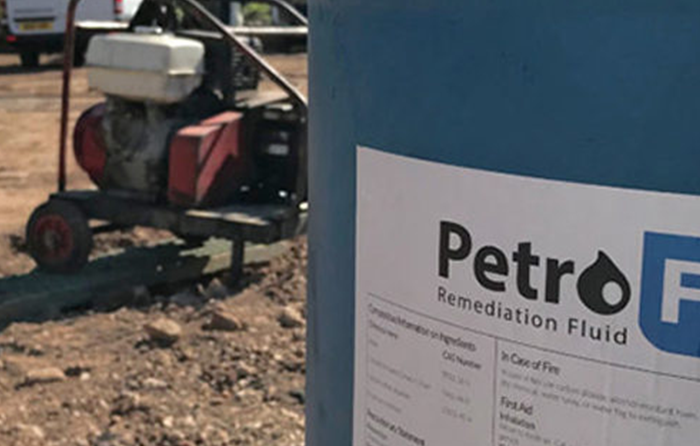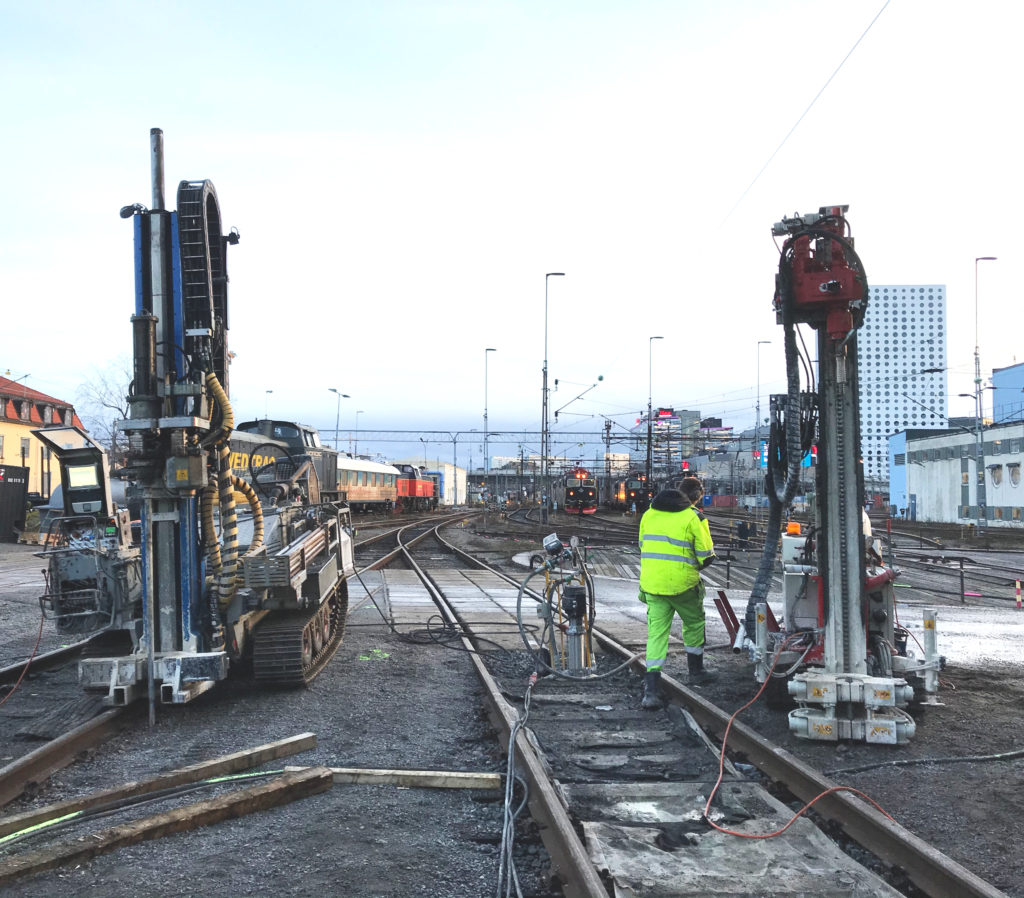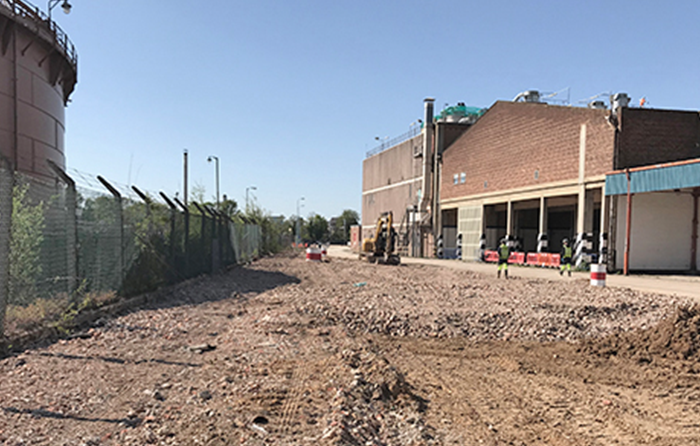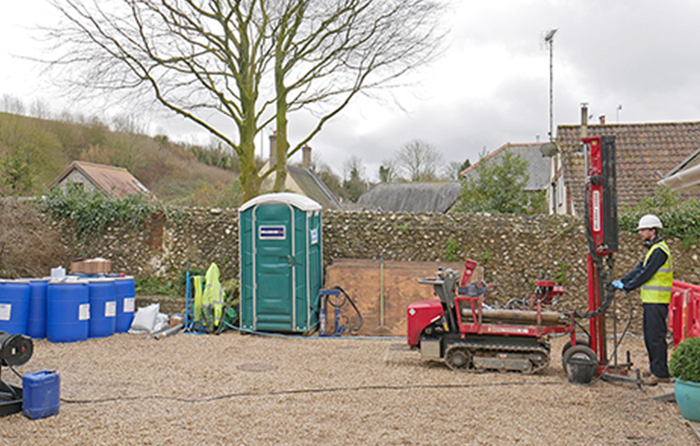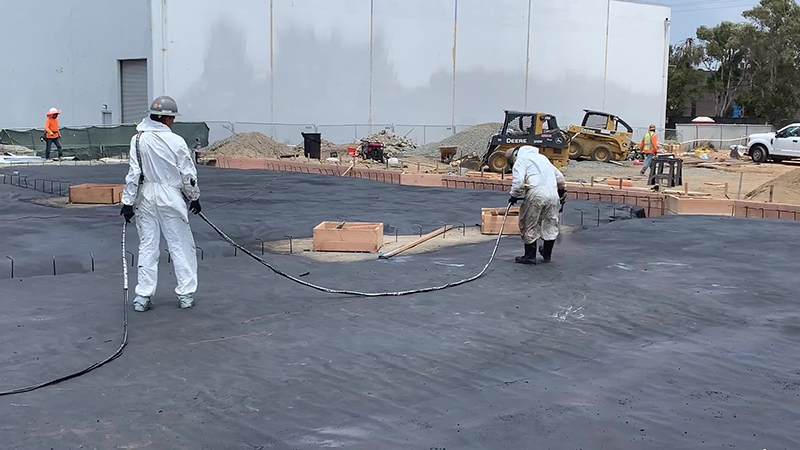Evaluatie van de in-situ behandeling van PFAS in het grondwater middels 6 pilootproeven
Taal: Nederlands
Kosten: gratis
In deze live webinar werd door Kris Maerten een reeks pilootproeven besproken die op één locatie zijn uitgevoerd door het bedrijf InSitu Remediation Services Ltd. Deze proeven werden uitgevoerd om verschillende technieken te evalueren voor de in situ behandeling van grondwater verontreinigd met PFAS (per- en polyfluorhoudende verontreinigingen).
De pilootproeven omvatten het gebruik van twee chemische oxidantia: waterstofperoxide en natriumpersulfaat, alsook vier adsorbentia: actieve kool in poedervorm (PAC), colloïdale actieve kool (CAC) (ons PlumeStop-product), ionenuitwisselingshars (REI) en biochar.
Voor de onderzochte locatie werden vóór de behandeling verschillende PFAS in het grondwater gedetecteerd, met name PFDS, PFBA, PFPeA, PFHxA, PFHpA, PFOA, PFOS en PFNA met concentraties tot 18.000 ng/L voor PFPeA. Daarnaast is er ook verontreiniging vastgesteld met benzine en met MTBE/TBA. Zes reactieve permeabele zones (PRZ’s) werden gecreëerd in een ondiepe watervoerende laag. De resultaten van dit werk zijn gepubliceerd in Wiley’s Remediation: https://doi.org/10.1002/rem.21653
In aanvulling hierop werd een stand van zaken gegeven van de ervaringen die REGENESIS heeft op andere PFAS sites en werden een aantal toekomstige projecten en lopende academische studies gepresenteerd (in samenwerking met 3 universiteiten). Na de presentatie kunt u uw vragen stellen in een vraag-en-antwoordsessie.
De belangrijkste punten die in dit webinar werden behandeld:
• De verdeling van de reagentia over het volledige injecie-interval wordt vergeleken. Dit laat zien dat CAC en persulfaat het meest gelijkmatig zijn verdeeld.
• De aanzienlijke hoeveelheden PAC en Biochar die in het filterpakket van peilbuizen terechtkomen en hoe dit de resultaten kan beïnvloeden.
• Chemische oxidatie lijkt niet effectief op PFAS.
• PAC’s, REI’s en Biochar laten aanvankelijke verlagingen van concentraties zien, gevolgd door een doorbraak van de verontreiniging.
• Alleen de CAC laat een langdurige efficiëntie zien waarbij alle PFAS onder detectielimiet blijven tot minstens 550 dagen na toepassing.
Over de spreker:
 Kris Maerten
Kris Maerten
Technical Manager, Europe | REGENESIS
Als Technical Manager heeft Kris de leiding over een team van ervaren milieukundig ingenieurs die instaan voor alle saneringsontwerpen met de producten van REGENESIS in Europe. Hij heeft zelf meer dan 2000 saneringsontwerpen gemaakt en is betrokken geweest in saneringswerken in een vijftiental landen in Europa en ook internationaal, zowel op het vlak van ontwerp en uitvoering, als evaluatie van de resultaten. Kris is ook District Manager voor de Benelux waar hij naast technisch verantwoordelijke ook commercieel verantwoordelijke is.
Over ons:
REGENESIS is een internationaal bedrijf dat gespecialiseerd is in producten voor in-situ bodemsaneringen. We hebben 25 jaar ervaring in de ontwikkeling en wereldwijde toepassing van producten die in de bodem geïnjecteerd worden voor de sanering van grondwaterverontreiniging.
Bekijk Webinar Opname
Études de cas sur la gestion rapide de panaches d’hydrocarbures et meilleures pratiques de dimensionnement
Langue: français
Accès: gratuit
Intervenants: Mariangela Donati, Aurélien Triger et Kris Maerten
L’application des technologies d’adsorption et de stimulation in-situ pour traiter les panaches de polluants organiques dans les nappes complète la panoplie des nombreuses solutions de gestion disponibles pour la remise en état des sites.
Dans ce webinaire, nous exposons les meilleures pratiques en matière de conception et d’application de cette technique, en nous appuyant sur une série d’études de cas tirées des références d’Antea Group sur des sites pollués par des hydrocarbures et où l’utilisation du fluide PetroFix a permis de finaliser la remédiation sur site.
Ce charbon actif colloïdal à double fonction, PetroFix, s’est fait une place de choix dans les injections en maillages, en barrières, et comme amendement appliqué en fond de fouille en vue d’un traitement poussé des sites pollués par des hydrocarbures pétroliers. La mise en œuvre de la technologie est simple, la taille des particules est idéale pour maximiser l’adsorption des hydrocarbures dissous, et le mélange d’accepteurs d’électrons stimule la biodégradation.
Trois études de cas sont présentées, portant sur les techniques d’application, les modifications de la chimie du site, les profils bactériens, et les enseignements tirés.
Les études de cas présentées dans ce webinaire comprennent :
- Un traitement combinant excavation et application de PetroFix sur le site d’un commerce de proximité, qui a permis de finaliser la remédiation du site.
- Un site complexe où le traitement des nombreux composés présents dans la nappe a été entrepris depuis plus de vingt ans et où PetroFix améliore désormais l’efficacité des travaux de dépollution.
- Un site présentant de faibles concentrations de BTEX, où l’injection de PetroFix en maillage a assuré un traitement poussé jusqu’à l’atteinte des objectifs de la remédiation.
Ce webinaire met également en avant les meilleures pratiques pour la conception et la mise en œuvre des travaux utilisant PetroFix, de façon à garantir des résultats concluants dans la dépollution.
À propos des intervenants:
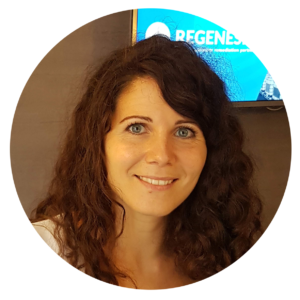
Mariangela Donati (ingénieure) –
Directrice région
Mariangela accompagne les clients en France dans le choix, la conception et l’évaluation des traitements de dépollution, en s’appuyant sur toute la gamme de technologies REGENESIS disponibles. Mariangela a étudié à l’université de Bologne. Elle a participé à une étude de développement en statistiques et géostatistiques appliquées aux concentrations de nitrates dans les eaux de surface à l’École des Mines de Paris et, en 2014, elle a obtenu un master en génie de l’environnement. Par la suite, elle a acquis une expérience professionnelle en France et en Italie dans le secteur de l’environnement, notamment en géostatistiques et gestion des sites pollués.
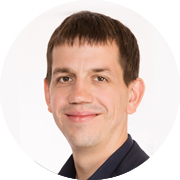 Aurélien Triger (docteur) –
Aurélien Triger (docteur) –
Représentant REGENESIS, France
Aurélien est ingénieur en Eau et Environnement et docteur en procédés pour l’environnement. Il travaille depuis plusieurs années dans le domaine des sites et sols pollués et notamment sur des problématiques techniques liées aux traitements in-situ et sur site : bio stimulation aérobie et anaérobie, ISCR, ISCO.

Kris Maerten (ingénieur) –
Directeur technique, Europe
Kris est un ingénieur en environnement chevronné, disposant de 22 années d’expérience dans l’industrie de la dépollution des sols et des eaux souterraines. En qualité de directeur technique REGENESIS, il dirige une équipe d’ingénieurs et de spécialistes en environnement, de niveau doctorat, très expérimentés, qui supervisent l’ensemble des travaux de conception technique partout en Europe. À ce jour, Kris a expertisé des milliers de sites, à des fins d’utilisation des technologies de dépollution in situ, notamment la réduction chimique in situ (ISCR), l’oxydation chimique (ISCO), la biostimulation aérobie et anaérobie, la stabilisation et l’amélioration des systèmes d’extraction. Dans le cadre d’une approche de concertation, Kris travaille en étroite collaboration avec les clients en vue de proposer la meilleure solution pour chaque site. Kris conseille les clients qui utilisent nos produits dans plus de 20 pays en Europe et ailleurs dans le monde.
Regarder l’enregistrement du webinaire
Webinarium: Pågående in situ-sanering på Hagalunds depån, Nordeuropas största tågdepå
Språk: Svenska
Presentatör: Say Svanström, Envytech Solutions AB
EnvyTech Solutions AB har fått i uppdrag av Jernhusen Verkstäder AB att utföra en in situ-sanering inom Hagalunds depå i Solna, Nordens största tågdepå. In situ-saneringen utförs för att möjliggöra framtida utveckling och förvaltning av fastigheten.
Depån har en lång historik av järnvägsrelaterad verksamhet och inom fastigheten har underhåll av ång-, el- och diesellok hanterats samt förvaring av diesel, spillolja och kol.
Inför in-situ saneringen utförde ett omfattande förutsättningskontroll, detta för att kunna avgränsa påträffad förorening i djup och plan samt för att kunna ta fram en platsanpassad design. Vid förundersökningen utfördes även ett injekteringstestet för att optimera designen för de aktuella förhållandena.
In situ-saneringen innefattade en kombination av olika in situ-saneringsmetoder. För att avlägsna fri fas petroleumprodukter användes vakuumextraktion och för att bryta ner petroleumföroreningen i jord och grundvatten direktinjekterades oxidations- och biostimulerande medel i marken. För att även förhindra återkontaminering i redan sanerade områden installerades horisontella och vertikala barriärer med aktivt kol.
För att utreda in-situ metodernas effekt utförs nu ett kontrollprogram.
Om presentatören:

Say Svanström
Projektledare på Envytech Solutions AB
Say Svanström är projektledare på Envytech Solutions AB. Hon har lång erfarenhet av jord-och grundvattensaneringar, både genom projektledning samt att själv driva dem i fält. Under dom senaste åren har Say specialiserat sig på in situ-saneringar med avseende av klorerade kolväten och petroleumföroreningar.
Watch webinar recording:
PetroFix – Pretrattamento del letto di posa di serbatoi e tubazioni per prevenire impatti futuri
Presentato da: Ing. Mariangela Donati, Mediterranean District Manager
Nel terzo e ultimo webinar della serie “Nuove opzioni di trattamento per i siti contaminati da idrocarburi”, Mariangela Donati illustra come il PetroFix®viene utilizzato per rivestire a scopo preventivo il materiale di riempimento utilizzato nelle trincee di scavo per alloggiare corridoi di sottoservizi e intorno a serbatoi di stoccaggio interrati o fuori terra. Tale strategia crea un filtro sotterraneo a base di carbone attivo per ridurre l’impatto di perdite future, minimizzare la mobilizzazione e inibire la formazione di vapori. Questo approccio è ampiamente applicabile su stazioni di servizio carburante, depositi di idrocarburi, oleodotti e siti industriali.
Questo webinar approfondisce i seguenti aspetti:
- Praticità di applicazione in forma spray o tramite iniezione
- Meccanismi di trattamento del PetroFix
- Esempi di pretrattamento di serbatoi interrati e di trincee di alloggiamento sottoservizi per prevenire fenomeni di contaminazione
- Limitazioni d’uso
Alla fine del webinar è presente un’ampia sessione Q&A (domande e risposte) in cui viene data risposta alle domande poste dai partecipanti.
Presentato da:
Ing. Mariangela Donati
Mediterranean District Manager, REGENESIS
L’ing. Donati, District Manager di REGENESIS per l’Italia, la Francia e altri paesi del Sud Europa, supporta i clienti nella selezione, nel dimensionamento e nella valutazione economica degli interventi di bonifica mediante le diverse tecnologie REGENESIS disponibili. L’Ing. Donati ha svolto i suoi studi all’Università di Bologna, dove ha conseguito nel 2014 una laurea magistrale in Ingegneria per l’Ambiente e il Territorio, avendo partecipato allo sviluppo di uno studio in ambito di statistica e geostatistica applicate alle concentrazioni di nitrati in acque superficiali presso l’École des Mines de Paris (Francia). Ha maturato successivamente esperienze lavorative pluriennali sia in Italia che all’estero nei settori ambientale, minerario, di geostatistica e di gestione dei siti contaminati nelle diverse fasi previste dagli iter procedurali.
Guarda la registrazione webinar:
Barriere permeabili reattive iniettabili con PetroFix: una soluzione rapida, semplice e sicura
Presentato da: Ing. Mariangela Donati, Mediterranean District Manager
In questo secondo webinar della nostra serie “Nuove opzioni di trattamento per i siti contaminati da idrocarburi”, osserviamo più da vicino come PetroFix viene utilizzato per realizzare barriere reattive permeabili iniettabili (I-PRB). Questa strategia di bonifica viene utilizzata per prevenire la migrazione di contaminanti all’esterno del sito in aree industriali dismesse, aree in fase di ri-conversione e costruzione e siti industriali attivi. In tutta Europa, ad oggi è stato installato oltre un chilometro di I-PRB utilizzando PetroFix. Mariangela Donati illustra perché le società ambientali e quelle di costruzioni trovano particolare interesse nel sostituire opere di contenimento fisico o altri interventi complessi con questo semplice approccio.
Punti chiave che sono approfonditi in questo webinar:
- In che modo le I-PRB con PetroFix riducono la responsabilità off-site
- Le attività di indagine sul sito utili per installare una I-PRB efficace
- Metodi di iniezione e installazione
- Vantaggi dell’uso delle I-PRB sui costi e sul cronoprogramma dei lavori
- Esempi di installazioni in situ
Alla fine del webinar è presente un’ampia sessione Q&A (domande e risposte) in cui viene data risposta alle domande poste dai partecipanti.
Presentato da:
Ing. Mariangela Donati
Mediterranean District Manager, REGENESIS
L’ing. Donati, District Manager di REGENESIS per l’Italia, la Francia e altri paesi del Sud Europa, supporta i clienti nella selezione, nel dimensionamento e nella valutazione economica degli interventi di bonifica mediante le diverse tecnologie REGENESIS disponibili. L’Ing. Donati ha svolto i suoi studi all’Università di Bologna, dove ha conseguito nel 2014 una laurea magistrale in Ingegneria per l’Ambiente e il Territorio, avendo partecipato allo sviluppo di uno studio in ambito di statistica e geostatistica applicate alle concentrazioni di nitrati in acque superficiali presso l’École des Mines de Paris (Francia). Ha maturato successivamente esperienze lavorative pluriennali sia in Italia che all’estero nei settori ambientale, minerario, di geostatistica e di gestione dei siti contaminati nelle diverse fasi previste dagli iter procedurali.
Guarda la registrazione:
Interventi con PetroFix a seguito di pronto intervento ambientale per spill di idrocarburi
Presentato da: Ing. Mariangela Donati, Mediterranean District Manager
Questo è il primo webinar di una breve serie dal titolo: “Nuove opzioni di trattamento per i siti contaminati da idrocarburi”. Questo webinar si concentra sull’uso di PetroFix come parte integrante o successiva di un programma di pronto intervento ambientale a seguito di spill o fuoriuscite di idrocarburi. La presentatrice Mariangela Donati introduce i processi di trattamento utilizzati dal PetroFix, e discute le modalità di applicazione, fornendo inoltre esempi di siti in cui società ambientali o di pronto intervento hanno utilizzato il PetroFix come parte integrante di una strategia proattiva a seguito di eventi accidentali.
PetroFix viene utilizzato per limitare immediatamente la capacità della contaminazione in fase disciolta di impattare proprietà poste a valle, gestire la massa residua di contaminante, prevenire problemi di intrusione vapori sotto edifici e ridurre al minimo o evitare future attività di bonifica sul lungo termine.
Punti chiave che sono approfonditi in questo webinar:
- I meccanismi di trattamento alla base del PetroFix
- Indicazioni operative per l’applicazione e la miscelazione
- Dove e in che modo PetroFix può integrarsi nelle attività ambientali da eseguire a seguito di un evento accidentale
- Limitazioni d’uso
Alla fine del webinar è presente un’ampia sessione Q&A (domande e risposte) in cui viene data risposta alle domande poste dai partecipanti.
Presentato da:
Ing. Mariangela Donati
Mediterranean District Manager, REGENESIS
L’ing. Donati, District Manager di REGENESIS per l’Italia, la Francia e altri paesi del Sud Europa, supporta i clienti nella selezione, nel dimensionamento e nella valutazione economica degli interventi di bonifica mediante le diverse tecnologie REGENESIS disponibili. L’Ing. Donati ha svolto i suoi studi all’Università di Bologna, dove ha conseguito nel 2014 una laurea magistrale in Ingegneria per l’Ambiente e il Territorio, avendo partecipato allo sviluppo di uno studio in ambito di statistica e geostatistica applicate alle concentrazioni di nitrati in acque superficiali presso l’École des Mines de Paris (Francia). Ha maturato successivamente esperienze lavorative pluriennali sia in Italia che all’estero nei settori ambientale, minerario, di geostatistica e di gestione dei siti contaminati nelle diverse fasi previste dagli iter procedurali.
Guarda la registrazione:
Expediting vapour intrusion pathway assessments & solutions, using high resolution continuous monitoring of VOCs
Duration: 1h
Language: English
REGENESIS is pleased to announce a special vapour intrusion webinar with guest speakers Blayne Hartman of Hartman Environmental Geoscience (USA) and Tom Wuyts, team manager at Terra Engineering & Consultancy, part of Group Van Vooren NV (Belgium). In this live European webinar, Blayne and Tom discuss the challenges of vapour intrusion assessments and the benefits of continuous monitoring. They are joined by Rick Gillespie, Senior Vice President of Land Science, the vapour mitigation division of REGENESIS.
With vapour intrusion assessments, typically only a few contaminant concentration measurements are made, so it is often difficult to reach a conclusion if the vapour intrusion pathway is a concern. The result is that vapour intrusion investigations can drag on for months to years before a conclusion can be reached regarding the potential risk. Such time periods are unacceptable if there is a potential risk to human health.
In this webinar you will learn:
- What is a continuous monitoring system and what does it consists of?
- The benefits of continuous monitoring:
- Large volume of contaminant concentration data over time for instant recognition of temporal and spatial patterns
- Combined benefits from simultaneous pressure and climatic data
- Rapid determination of cause and effect of measured VOC concentrations (<weeks), enabling remedies to be rapidly employed
- Case study examples from a variety of sites, illustrating the effectiveness of high-resolution data for expediting vapour intrusion assessments.
- Lessons learned from these sites, on:
- Temporal and spatial variability of indoor air concentrations
- Factors influencing contaminant concentrations
- Immediate mitigation remedies
About the presenters:

Blayne Hartman, Ph.D.
Hartman Environmental Geoscience, USA
Dr. Blayne Hartman is a US recognized expert on soil vapor sampling, soil vapor analysis, and vapor intrusion. He has provided training on soil gas methods and vapor intrusion to State regulatory agencies in over 30 American states, many of the EPA regions, ASTSWMO, Australia, Brazil, Israel and countless stakeholder groups and consultants. He was an instructor in previous training courses given by EPA-OUST, ITRC, API and ASTM.
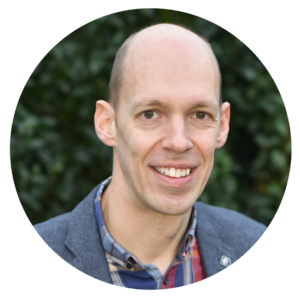
Tom Wuyts, M.Sc.,
Terra Engineering & Consultancy (TEC), Belgium
After graduating at the University of Antwerp as a Master in Chemistry (cum laude) and having done an additional year of research in the field of Electrochemistry at the same university to develop his skills further, Tom started his career in the private sector in 2004 in the Laboratories Van Vooren, now called Group Van Vooren, to work on remediation projects. In those years he built up an extensive knowledge about both ex-situ and in-situ remediations, and eventually became project leader of several large multimillion dollar projects, including thermal. Although he didn’t forget the importance of working on smaller projects as well. In 2013 Tom was asked to become the Team Manager of TEC, the consultancy company which is part of Group Van Vooren. TEC’s core business includes soil surveys and assessments, risk analysis, remediation projects, and in recent years also more and more asbestos inventories, and not to forget air monitoring assessments (including the automated continuous monitoring known as VaporSafe).
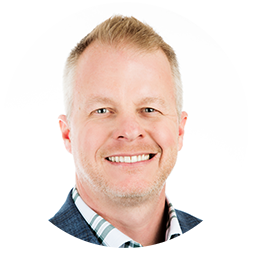 Rick Gillespie,
Rick Gillespie,
Senior Vice President North America, REGENESIS and Land Science
Rick Gillespie serves as Senior Vice President North America for REGENESIS and Land Science. In his role, he directs a team of scientists and engineers focused on vapor intrusion mitigation and environmental remediation at a wide variety of contaminated sites. Rick works closely with state regulators, environmental consultants, property owners, and passive barrier applicators on vapor intrusion mitigation projects across North America. He has conducted numerous vapor intrusion training courses and has an excellent reputation for communicating technical content to an audience with a diverse technical background. His career focuses on innovative remediation technologies to treat chlorinated solvents, petroleum hydrocarbons, and emerging contaminants in soils and groundwater. He was a co-author on the ‘Multi-Site Air Sparging Design Paradigm’ and contributed to the publication ‘Principles and Practices of Enhanced Anaerobic Bioremediation of Chlorinated Solvents. Mr. Gillespie earned his B.S. in Environmental Science from the University of Oklahoma.
Land Science is a division of REGENESIS Inc. in the USA. For more information on Land Science and its vapour intrusion mitigation products, please visit landscience.com
Watch webinar recording
PetroFix – Pre-treatment of tank and pipe bedding to prevent future impact
Presenter: Jack Shore
Language: English
In the third and final webinar in the series ‘New treatment options for petroleum hydrocarbon impacted sites’, Jack Shore explains how PetroFix® is being used to pre-coat aggregate used in utility corridors and around Underground Storage Tanks (USTs). This creates underground activated carbon filters to reduce the impact of future losses, minimise mobilisation and suppress the formation of vapours. This approach is widely applicable on petrol filling stations, pipelines and industrial sites.
This webinar covers:
- Practical application through spray or injection
- Treatment mechanisms of PetroFix
- Examples of UST pre-treatment and service corridor treatment to prevent recontamination
- Limitations of use
About the presenter:
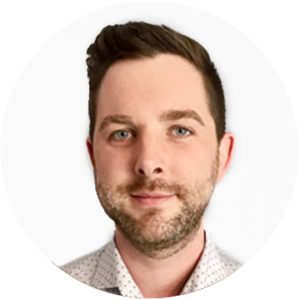
Jack Shore
Senior District Manager | REGENESIS
Jack is the Colloidal Carbon Technologies Lead for REGENESIS in Europe, as well as in charge of the UK and Scandinavian districts within the company. As part of these roles, he manages a team providing technical support and design work to a mix of Design and Build Consultancies, Remediation Contractors and Blue-Chip Clients. Jack has over 12 years of experience within the remediation industry and most recently has successfully implemented the first injection of PlumeStop to effectively stabilise a PFAS plume in the EU. His experience ranges from supervising site investigations, developing in situ remediation designs, and managing large-scale remediation projects with multiple stakeholders.
Watch webinar recording
In Situ Permeable Reactive Barriers using PetroFix: A quick, simple and safe solution
Presenter: Jack Shore
Language: English
In this second webinar in our series ‘New treatment options for petroleum hydrocarbon impacted sites’, we take a closer look at how PetroFix is being used to create in situ permeable reactive barriers (I-PRB’s). These are being deployed to prevent offsite contaminant migration on brownfield development, construction and active industrial sites. Across Europe, over one kilometre of I-PRB’s have been installed using PetroFix. Jack Shore discusses why construction companies are keen on replacing complex cut-off walls with this simple approach.
Webinar highlights:
- How PetroFix I-PRBs reduce off-site liability
- The site characterisation required to install an effective I-PRB
- Injection and installation approaches
- Cost and programme savings of I-PRBs
- Examples of installations on site
About the presenter:

Jack Shore
Senior District Manager | REGENESIS
Jack is the Colloidal Carbon Technologies Lead for REGENESIS in Europe, as well as in charge of the UK and Scandinavian districts within the company. As part of these roles, he manages a team providing technical support and design work to a mix of Design and Build Consultancies, Remediation Contractors and Blue-Chip Clients. Jack has over 12 years of experience within the remediation industry and most recently has successfully implemented the first injection of PlumeStop to effectively stabilise a PFAS plume in the EU. His experience ranges from supervising site investigations, developing in situ remediation designs, and managing large-scale remediation projects with multiple stakeholders.
Watch webinar recording
Subsurface oil spill response using PetroFix
Presenter: Jack Shore
Language: English
This is the first webinar in a short series titled: ‘New treatment options for petroleum hydrocarbon impacted sites’. This webinar focuses on the use of PetroFix as part of an oil spill response programme. Presenter Jack Shore introduces the remediation processes employed by PetroFix. He discusses application methods and gives examples of sites where oil spill response companies are using PetroFix, as part of their oil spill response approach.
PetroFix is being used to immediately limit the ability of dissolved contamination to impact downgradient properties, target residual contaminant mass, prevent vapour issues under properties and to minimise or avoid future remediation activities.
This webinar covers:
- The treatment mechanisms underpinning PetroFix
- Practical application tips and mixing
- Where PetroFix can fit as part of an oil spill response programme
- Limitations of use
About the presenter:
 Jack Shore
Jack Shore
Senior District Manager | REGENESIS
Jack is the Colloidal Carbon Technologies Lead for REGENESIS in Europe, as well as in charge of the UK and Scandinavian districts within the company. As part of these roles, he manages a team providing technical support and design work to a mix of Design and Build Consultancies, Remediation Contractors and Blue-Chip Clients. Jack has over 12 years of experience within the remediation industry and most recently has successfully implemented the first injection of PlumeStop to effectively stabilise a PFAS plume in the EU. His experience ranges from supervising site investigations, developing in situ remediation designs, and managing large-scale remediation projects with multiple stakeholders.

 Americas
Americas Europe
Europe Français
Français Deutsch
Deutsch Italiano
Italiano Español
Español
